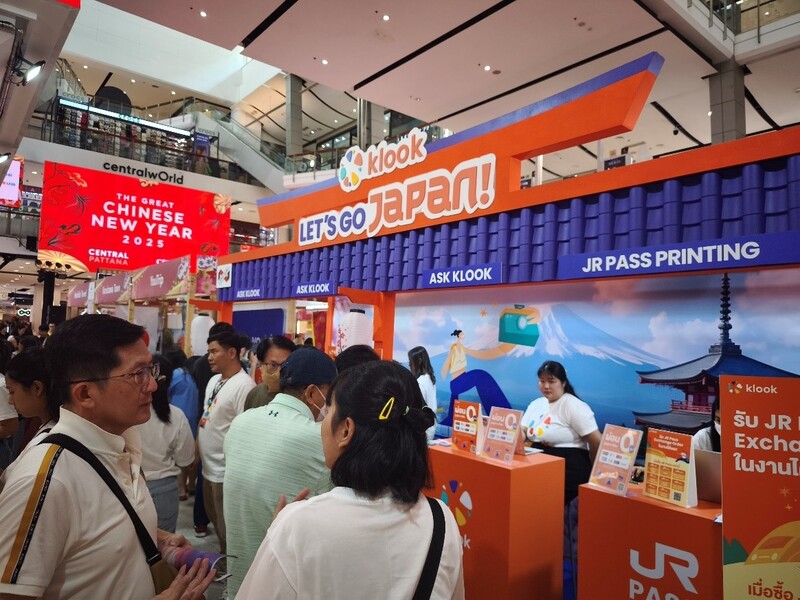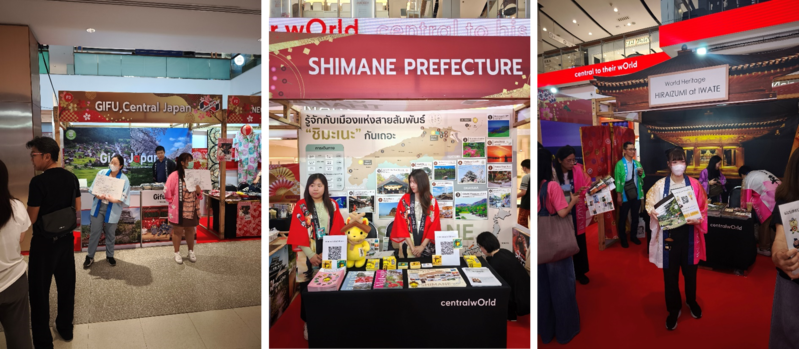<Expat Column> Thai Inbound Tourism to Japan: Travel to Regional Areas and Social Media
- Release date: Aug 18, 2025
- Update date: Aug 18, 2025
- 2279 Views
In February 2025, “Japan Expo 2025” will be held in Bangkok, Thailand, at Central World, one of Thailand's leading shopping malls located in Siam, the largest central district in Bangkok. This is one of Asia's largest expos dedicated to Japan, and every year it attracts large crowds, mainly due to the stage performances by Japanese and Thai pop musicians such as Kazuya Kamenashi.
In addition to the ongoing popularity of subculture and Japanese cuisine in Thailand, what particularly caught attention this time was the booths related to travel to Japan and the large number of people gathering around them.

Recently, the weak yen has been a tailwind, and the number of Thai travelers to Japan is expected to increase to approximately 1.15 million in 2024, reaching a record high by 2026. In terms of inbound marketing, Thailand, which has a high level of pro-Japanese sentiment and economic power in Southeast Asia, is a country that cannot be ignored.
A recent trend among Thai travelers to Japan is that they tend to visit not only major cities such as Tokyo, Kyoto, and Osaka, but also tourist destinations in rural areas. At this year's Japan Expo, local governments from across Japan actively participated in the event, aiming to promote their regions as potential destinations for Japanese travelers.
(While various booths made creative efforts to attract attention, according to the Thai staff who attended the event, information about lesser-known regional tourist spots tends to be difficult to remember, and it seems that a strong impression is necessary to encourage actual visits.)

In fact, at Intage Thailand, we have seen many people traveling to Japan recently, but when we ask them about their destinations, we find that they tend to visit regional cities and somewhat unexpected travel destinations. We conducted mini-interviews with Intage Thailand employees, and here are some actual examples.
■Sirinate-san

FMCG sector: Director of Japanese language team
・Local travel destination: Otaru (Hokkaido)
・Travel period: Spring 2025
・Reason for choosing the travel destination:
My husband saw a YouTube video from Thailand introducing a place called “Aotsuka Shokudo (restaurant/guesthouse)” in Otaru and said he wanted to go there.
・Items purchased in Japan:
Shopping at Mitsui Outlet Park (Nike/Adidas shoes, sportswear, bath, skin, and body care products), gachapon toys (for children), etc.
・Favorite aspects of traveling in Japan:
Safety. People are kind. Due to the weak yen, travel costs are significantly cheaper compared to Europe and America.
・Aspects of traveling in Japan that I do not like:
There are many tourists. Breakfast ends early. Driving is easy, but highway tolls are expensive.
■Top-san

FMCG sector: Director of English-speaking team
・Local travel destination: Obara (Aichi Prefecture)
・Travel period: Fall 2024
・Reason for choosing the destination:
I researched famous autumn foliage spots online. I didn't want to go to places with many other Thai tourists. I stopped by on my way from Kyoto to Tokyo.
・Items purchased in Japan:
I spent a significant amount of money on luxury brands (such as The Row and Guerlain) that are difficult to find in other Southeast Asian countries. I purchased Disney collector’s items in Akihabara. Matcha powder supplements.
・Favorite aspects of traveling in Japan:
Safety. Enjoyable dining and shopping.
・Least favorite aspects of traveling in Japan:
It would be more convenient if English were more widely understood.
■Nao-san

FMCG sector:
Assistant manager of Japanese language support team
・Places visited: Kyushu (Kumamoto Prefecture, Miyazaki Prefecture, etc.)
・Travel period: Winter 2024
・Reason for choosing the destination:
I saw Takachiho on social media (YouTube, Facebook, etc.) and thought it was beautiful. I had never been to Kyushu before, so I wanted to travel there.
・Items purchased in Japan:
Japanese cosmetics (KATE, KISS ME, Cezanne, Canmake, Curel, Kosé, etc.)
・Favorite aspects of traveling in Japan:
Delicious food and beautiful scenery.
・Least favorite aspects of traveling in Japan:
At popular restaurants, you usually have to wait in long lines.
It is also interesting to note that Japanese consumers tend to purchase Western brands more than one might expect. According to Top, the latest trends in Western brands often arrive in Japan before they do in Thailand, and since Japan has a better selection of products, Thai consumers who are particularly interested in the latest trends tend to make such purchases in Japan.
Another notable point is that everyone is actively researching travel information on platforms like YouTube and other social media.
I was also told about specific channels, and I was surprised to find that Thailand has far more travel-related YouTube channels and content with a large number of subscribers compared to Japan. In particular, there are several channels that have gained a significant number of subscribers by specializing exclusively in “Japan travel” content (I will introduce a few below).
In Japan, there are currently no YouTube channels focused on specific overseas travel destinations that have grown significantly, so this is a major difference. (Why there are more travel-related YouTube content in Thailand compared to Japan, and why it is so popular, is a very interesting topic, but I will refrain from discussing the reasons as it deviates from the main topic.)
■KINYUUD: 200,000 subscribers / Specializes exclusively in content related to travel in Japan
Popular video: Japan's largest flea market
■Pigkaploy: 1.76 million subscribers / Content related to overseas travel in general
Popular video: Harvesting green onions in Hokkaido
When you watch popular videos, you'll see that a lot of them are pretty niche. This shows that Thai people aren't really into super famous tourist spots like Asakusa, Kinkaku-ji, and Kiyomizu-dera.
Thais are easily influenced by social media and, unlike Japanese people, they don't hesitate to mimic trends. They often post their own versions of these trends on social media, which further fuels their spread (recently, wearing Hello Kitty kimonos and posting them on social media has become a hot topic among Thais).
However, there is also a desire to visit (and learn about) special places that others do not go to, to do special things, and to buy special items. As a result, new and unexpected trends in Japanese travel will continue to emerge (and fade away) in the future.
In this article, we have introduced topics related to Thai inbound tourism. We hope this information will be helpful in considering the consumption behavior of Thai inbound tourists.
-

Author profile
Tomohiro Makino
***
-

Editor profile
Chew Fong-Tat
Malaysian researcher who has lived in Japan for 14 years and has handled many surveys on ASEAN countries.
 Global Market Surfer
Global Market Surfer CLP
CLP